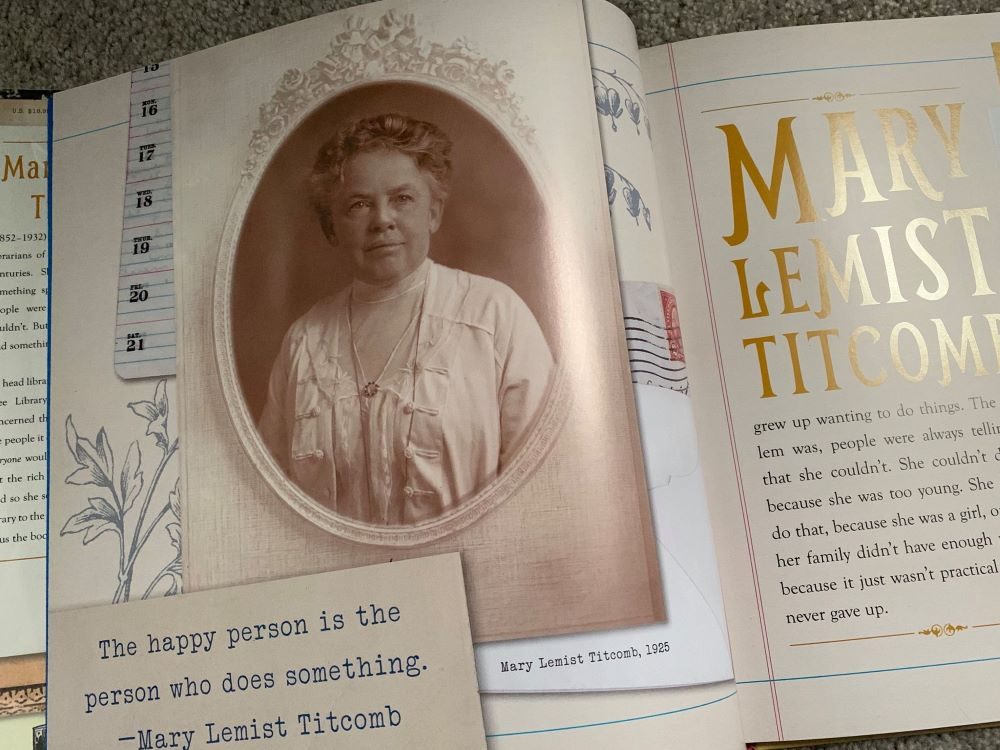 Photo: The News Wheel
Photo: The News Wheel
Access to books, quality education, and a public library system is a gift, not a guarantee. Not now, and definitely not back in the late 19th and early 20th centuries. But, one woman, Mary Lemist Titcomb, a librarian from Maryland, was determined that everyone, no matter their economic status, should have access to library books.
Available Now: 2020 Buick Enclave
Titcomb’s dedication and her longlasting impact on the public library system is the subject of the book Library on Wheels: Mary Lemist Titcomb and America’s First Bookmobile by Sharlee Glenn.
Titcomb was born in Farmington, New Hampshire, on May 16, 1852. Glenn shares details of Titcomb’s childhood, family, and educational pursuits. Inspired by her brother who became a doctor, Titcomb started nursing school but found it to be a bad fit. A church bulletin revealed a new field of work — librarianship — and Titcomb was enthralled by the prospect.
 Photo: The News Wheel
Photo: The News Wheel
She made her way to Concord, Massachusetts, to begin her unpaid apprenticeship. She then became a cataloguer at Vermont’s Rutland Free Library, was elected to executive secretary of the inaugural Vermont Library Commission (the first woman in the state to hold a state office), and eventually became the ALA’s vice president.
She became Head Librarian of the newly created Washington County Free Library in 1901. At this library, she started an hour of storytelling for children living in rural areas and put up 75 library book deposit stations throughout the area.
Next, she put plans in motion for a “book wagon” drawn by horses. It carried 200 books and made its maiden trip in April 1905. The book wagon continued to bring books to eager readers until a train accident in 1910. The book wagon was destroyed, but thankfully the driver and horses were unharmed.
Titcomb was determined to keep the book wagon going, and after receiving a $2,500 donation from William Kealhofer, the horse-drawn wagon was replaced by a horseless carriage. The first motorized bookmobile, “a customized International Harvester Auto Wagon,” hit the road. It carried approximately 300 books.
Titcomb revolutionized the library system with the invention of the bookmobile, and Glenn is able to capture her spirit and accomplishments in her book. The book reads and looks like a scrapbook, pulling you into the life and time of Titcomb. The beautiful packaging, historical photos, snapshots, and artwork enhance the words of Glenn, who artfully reveals Titcomb’s important innovation to the world.
Available Now: 2020 GMC Yukon
This book is a must-read for anyone who has found joy, solace, and help from their public library and the librarians and associates who love sharing a good story.
DeAnn Owens is a Dayton transplant by way of the Windy City, yet considers herself to be a California girl at heart even though she’s only visited there once. To get through the dreaded allergy season unique to the Miami Valley, she reads, writes, complains about the weather, and enjoys spending time with her husband, two sons, and their newest addition, a Boston terrier puppy that is now in charge of all their lives. In the future, she hopes to write a novel and travel through time. See more articles by DeAnn.









